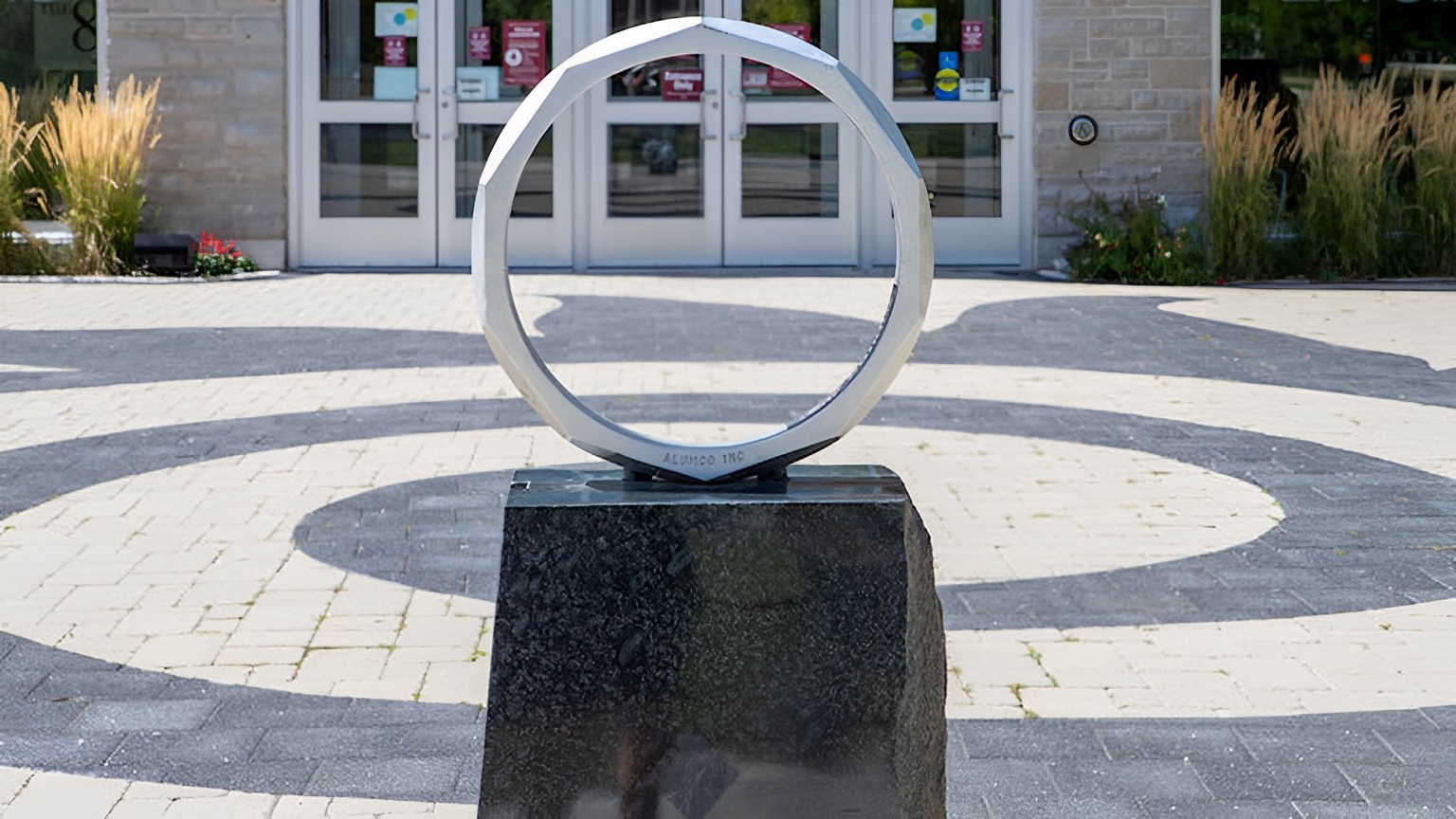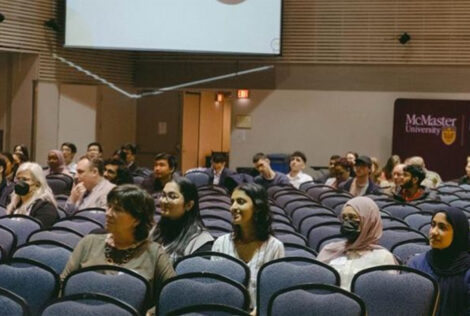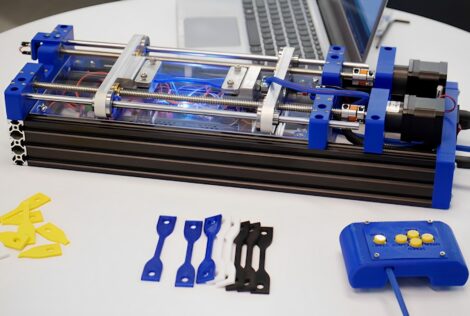

In honour of Camp XIII’s Iron Ring ceremony taking place today and the upcoming Iron Pin ceremony next week, we sat down with four professors from different areas of engineering to discuss the importance of ethics in their roles as leaders in the field.
On August 29th, 1907, in Quebec City, a bridge undergoing construction collapsed, killing 75 of the 86 workers, half of which were Indigenous.
The Quebec Bridge Disaster led to the creation of ethical practices that all engineers across Canada are bound to in their profession.
In 1922, the creation of the Iron Ring served as a promise amongst all Canadian engineers to fulfill their professional roles with utmost care and respect for the communities they serve. To this day, the Iron Ring signifies their commitment to valuing the Code of Ethics above all else.

Andrew Gadsden, Mechanical Engineering
What does the Iron Ring symbolize?
The Iron Ring symbolizes an oath that early-career engineers take where we, as engineers, must use our knowledge and skills to advance society while safeguarding public health.
Why is it important to put ethics at the forefront of being an engineer?
Engineers have a responsibility to perform the duties in which they are trained to the best of their ability. Due to the nature of our profession, it is important to act in an ethical fashion in order to safeguard public health while upholding the standards and practice of our engineering society.
Can you give us a real-world example of why ethical engineering is important?
A well-known example of ethical engineering is the unfortunate Challenger space shuttle disaster in 1986. Although engineers communicated the dangers of launching the shuttle during cold weather, the launch still proceeded and catastrophic failure occurred (ultimately due to improper seals provided by the O-rings in the colder than normal weather). Although there were other factors, ethical engineering and the ability to clearly and effectively articulate risks to users based on scientific and engineering principals is critically important in preventing catastrophic failure.
How do you practice ethical engineering in your day-to day life?
As a Professional Engineer of Ontario, I practice engineering according to the PEO’s Code of Ethics. The Code of Ethics is a guide for professional conduct and imposes duties on practitioners with respect to society, employers, clients, and others. The Code of Ethics, when supported by sound engineering principles, helps engineers provide reliable and sound technical advice and solutions.
What advice would you give to the graduating students who are receiving their Iron Ring this week?
Although it has been 17 years since my Iron Ring ceremony at McMaster, I remember it fondly. Enjoy the experience and remember all the hard work and late nights that you put in to make it happen (and of course be sure to thank your family and friends!).
Professor Gadsden also sat down with Engineers Canada to further discuss the importance of ethics in engineering. Read the full article here.

Rong Zheng, Computing and Software
Why is it important to put ethics at the forefront of being an engineer?
I am a Professor of Computing and Software and the Director of the NSERC-funded interdisciplinary graduate training program in Smart Mobility for Aging Populations. My research mostly concerns the design of mobile platforms and algorithms for human-centric sensing. The Professional Engineers of Ontario (PEO) have clearly defined the Code of Ethics for engineers. I would like to share the perspective of a researcher who deals with human subject data and develops machine learning (ML) models to extract actionable knowledge from such data. ML models are only as good as the data fed to them during model training. As such, biases in the data lead to biased predictions. Thus, an important consideration when building datasets is inclusivity and diversity.
Can you give us a real-world example of why ethical engineering is important?
One recent example is in testing our acoustic-based method for 3D head and ear scans; we found that our model tends to have low prediction accuracy for people with certain facial features due to a lack of similar examples in the dataset. I am also very wary of ML models or products built upon ML models that do not make explicit the assumptions made during training or fail to provide a confidence score for their predictions. Assumptions such as symmetric body shape or normative walking patterns will clearly limit the resultant model’s generalizability to populations who do not conform to these “norms.”
What advice would you give to the graduating students who are receiving their Iron Ring this week?
My advice to new graduates is, when developing technologies, be conscious of and embrace diversity.

Cancan Yang, Civil Engineering
What does the Iron Ring symbolize?
The ring symbolizes the engineer’s duty to maintain the highest ethical standards and to serve society with integrity, honesty, and expertise.
Why is it important to put ethics at the forefront of being an engineer?
It is essential to prioritize ethics in engineering because the work of engineers directly impacts the safety, well-being, and quality of life of individuals and communities. Engineering projects carry significant consequences, and any ethical lapses or errors in judgment can result in catastrophic outcomes.
Can you give us a real-world example of why ethical engineering is important?
The Quebec Bridge collapse is an example of why ethical engineering is important. The main cause of the collapse was identified as the flawed design of the bridge’s latticing on the compression chords. It was also later discovered that the consulting engineer for the project was largely responsible for the disaster, as he made several unethical decisions, which compromised the safety of the bridge.
The collapse was a tragedy that could have been prevented if ethical considerations had been prioritized.
How do you practice ethical engineering in routine work?
1. Strictly adhere to structural design and construction design standards and maintain proper documentation of the work.
2. Maintain effective communication with clients, stakeholders, and contractors, architects.
3. Avoid plagiarism or any other form of academic misconduct behaviour.
4. Stay up to date with the code updates/revisions and emerging technologies (e.g., advancements in materials, software, improved design and analysis methods)
What advice would you give to the graduates who are receiving their Iron Ring this week?
I would like to congratulate our graduates on this significant achievement and wish them the best of luck in their future endeavors.
I hope they will always strive to be an ethical and responsible engineer, put public safety as the top priority, and also consider the broader social and environmental impacts of their work. I believe our McMaster graduates will use their knowledge and expertise to benefit society and make a positive impact on the world.

Lydell Wiebe, Civil Engineering
In your own words, what does the Iron Ring symbolize?
The Iron Ring reminds us that the work we do as engineers is more than just equations and models: it directly affects the lives of real people. The link is particularly clear for me as a structural engineer who teaches students about design with steel: getting the engineering right is what makes the difference between a building that shelters the people inside it and one that collapses on top of them.
Why is it important to put ethics at the forefront of being an engineer?
As engineers, our primary duty is not to our employer, our client, or ourselves, but to the public. Ignoring ethics would allow us to cut corners on our designs, or to look the other way when we see something that we know is wrong. But our ethical obligation is to think more broadly, always thinking first about how we can use our engineering skills to make the world a better place.
Can you give us a real-world example of why ethical engineering is important?
The news recently has been full of heart-wrenching stories from Türkiye and Syria, where over 50,000 people died due to a series of earthquakes in February 2023. We have an unfortunately true saying in earthquake engineering: “earthquakes don’t kill people; buildings do.” The reports that I’m hearing from engineers who have visited the region suggest that the scale of the disaster was largely because the excellent building code that they have in Türkiye was not consistently enforced. While code enforcement is not only an engineering issue, these reports are a clear reminder of the importance of the work that we do as engineers.
How do you practice ethical engineering in your day-to-day life?
A big part of it is being honest about the limits of my knowledge, and not working alone. One of my tasks these days is to lead the group that updates the standard for the seismic design of steel buildings in Canada. While I have some expertise in this area, I would never think of writing the Standard by myself. Working with a team of experienced and dedicated engineers, however, gives me confidence that we are protecting the safety of the people who will one day be in buildings designed using the provisions that we write.
What piece of advice would you give to the graduates who are receiving their Iron Ring this week?
Be confident both in what you know and in what you don’t know. You have a solid training in engineering fundamentals through your time at Mac, and you have more to learn as you put that knowledge into practice. The senior engineers who now seem like they know everything once knew no more than you do, and it is by learning from the mentors you will work with that you will develop the skills and confidence that you need to practice ethical engineering. In fact, this is part of the symbolism of the ceremony: established engineers are welcoming you into a community that seeks to use engineering principles to build a better world.


